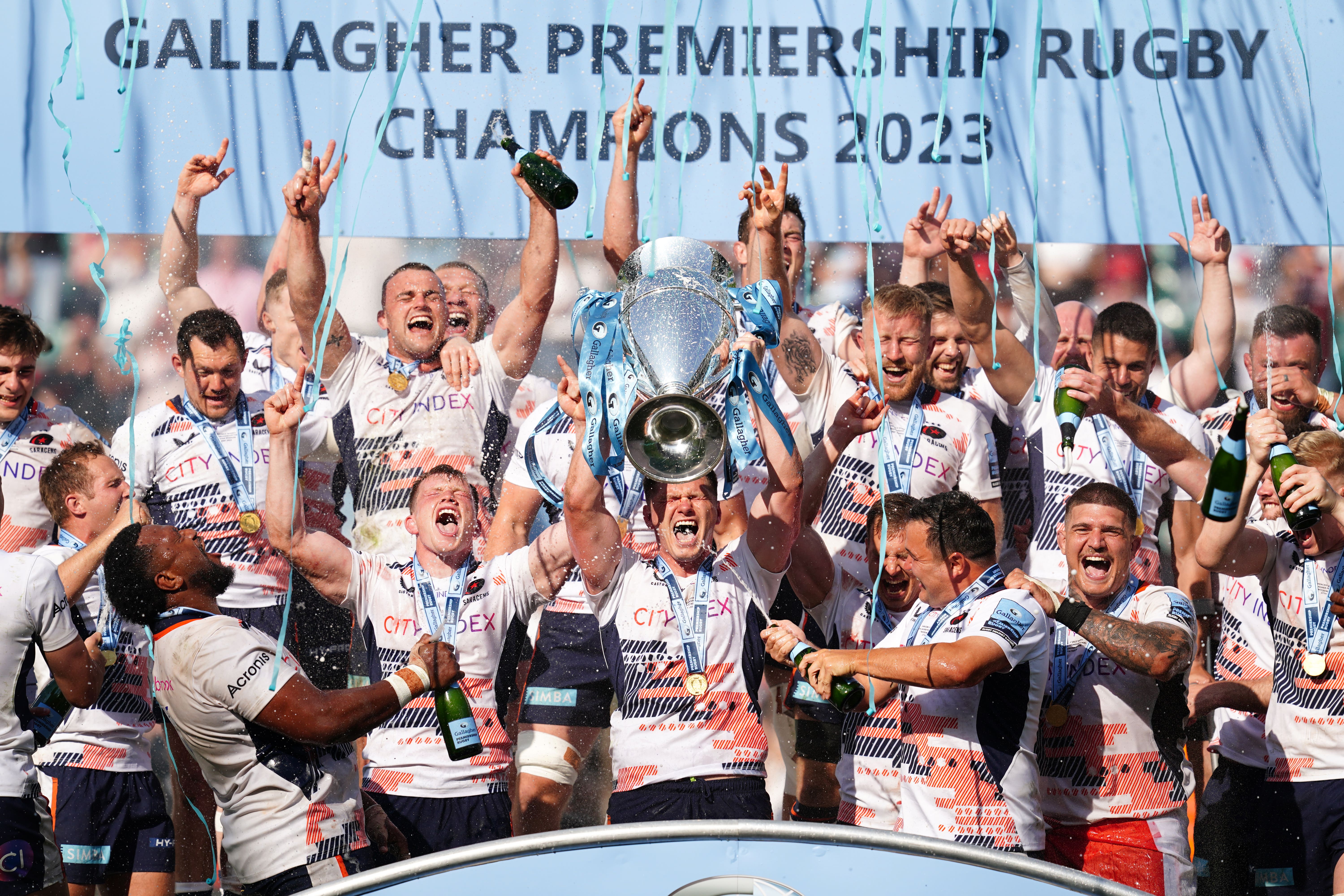
The curtain came up and the spotlight came down, fixing in on the two fly-halves. It was the duel within the duel that so many had been looking forward to on Premiership final day, George Ford and Owen Farrell together on the Twickenham turf again. The two schoolmates are ever inextricably intertwined, two-thirds of England’s fly-half puzzle about which so much will be written in these next few months before Steve Borthwick’s side embark on their Rugby World Cup adventure.
It lived up to the billing. On a day for big performers – Tom Curry and Manu Tuilagi in defeat; Max Malins, Maro Itoje and a hatful of other Saracens in victory – both fly-halves stood out. Sale arrived intent to grind out the victory, kicking and chasing and exerting pressure at scrum time. For a spell early in the second half, it appeared to be working, with Ford pulling the right levers as Sale worked their way into a winning position.
But Saracens had enough, winning the big moments to take victory. The final result was just – the now six-time champions had been the more ambitious of the two sides, and the more consistently threatening.
For so long the league’s bully boys, building their five title triumphs on forward cohesion, depth and might, now Saracens are among the league’s entertainers, utilising their fine array of ball players to twinkle in the Twickenham sun. Farrell was at the heart of it all to leave Ford ever so slightly in his shadow.
“If you go out, don’t play any rugby and lose, it’s the worst feeling,” Elliot Daly explained of Saracens’ evolution. “So this year we’ve just backed ourselves – when it’s on, we’ve tried to play. That’s what we showed today; when we got into their half, we built pressure and scored points.
“The way we’ve played this year, it doesn’t matter; if we back ourselves and it goes wrong, it goes wrong. We know it was probably the right decision.”

It is no overstatement that this Saracens season has seen the emergence of a different Farrell, from taskmaster to ringmaster with his side encouraged to back themselves and show their circus skills. His offloading game has always been underrated, but playing flatter to the line this year has enabled the 31-year-old to show his varied distributing skills.
Both the man himself and his Saracens teammates have been keen to stress that the fly-half has always been capable of this sort of free-thinking excellence, and it has been glimpsed on occasion, but there is certainly a sense that a new dimension to Farrell has been unlocked.
“He’s playing unbelievably well but he’s always been a huge big-match player,” said Alex Goode. “He’s a competitor and it’s a joy to play with him when you know he’s going to stand up and be counted and take the fight to them. He did that defensively as much as in attack. He believes in us as a backline.
“It’s an evolution of the team. We kept wanting to move the ball quicker and more and not be as direct. We saw facets of that. We showed the courage to play that way.”
The question now is if Farrell can similarly free himself of his inhibitions at Test level with England. Barring dramatic pre-tournament improvement, it feels unlikely that a pack as often overmatched as England’s is going to be able to drive Borthwick’s side to World Cup success. Given the make-up of the coaching staff, a kick-pressure game may well be favoured at times, but there will be a need to play with more freedom and adventure.

On the evidence of his club season, there is no reason Farrell cannot be at the heart of that. Of course, the more condensed spaces at international level will provide different challenges, but the long lead-in could allow the national team to cultivate an attacking culture around many of the same parts that Farrell has enjoyed working with at Saracens – both Daly and Malins were impressive in their fly-half’s slipstream at Twickenham. Much of England’s success in the period between 2016 and 2019 was built on the strength of a Saracens spine. The vertebrae may look slightly different but could again benefit their national side.
Perhaps there is still a place for Ford – certainly with the way that the fit-again fly-half has controlled Sale in the run-in, he has a World Cup part to play. The merit of the pair’s efficacy as a 10-12 axis will continue to be debated, but the combination was a key driver in taking England’s run to the final four years ago, and it cannot be complete coincidence that the dissipation of the Eddie Jones era came largely after the pair were split up.
But after watching him cap a superlative individual and team season at Twickenham on Saturday, it was hard not to conclude that the World Cup should be Farrell’s show.







